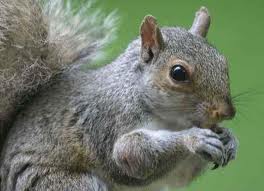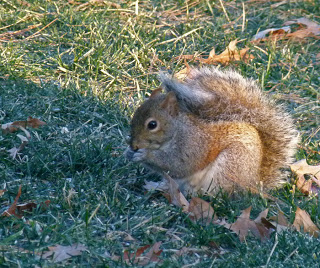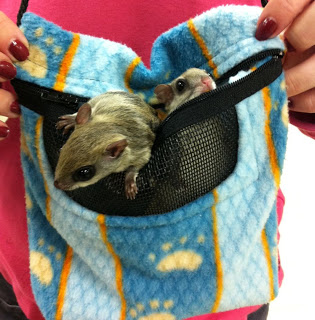Last Saturday, Creasey Mahan Nature Preserve celebrated National Squirrel Appreciation Day. Our friend Brigette Williams, of Second Chances Wildlife Center, came to share some of her squirrely friends.
The tree squirrel is a very special animal. It is one of very few wild animals that have adapted to humans and learned to coexist with man. It can live on both natural foods and handouts. The squirrel is an acrobatic wonder to young and old. Its large tail makes it the most recognized mammal on Earth. It amazes us with daring high wire acts, as it races through the tree branches. Its determination to find a way to get seeds from a so called “squirrel proof” bird feeder is a delight to watch. The average Gray squirrel is fifteen inches long and weighs about one pound. Its diet consists of nuts, seeds and fruit. They will eat scrapes from the trash including bread, meat and even snack food. The life span of the squirrel is approximately six years. Most urban squirrels do not reach their first birthday, not due to predators, but rather to automobiles, compared to its rural counterpart, which often perishes from the lack of food.
Squirrels are the most active in late winter, when the mating season begins. The males will chase a females, as well as, chase off other suitors. This ritual of chasing, occurs through the trees at top speed. While they perform some of the most breathtaking acrobatics imaginable. During winter storms, or severe cold, the squirrel may not leave the nest for days. But, the tree squirrel does not hibernate! When a squirrel senses danger, its first instinct is to stand motionless. If on the ground it will race to the closest tree, or other climbable object to escape. If it is in a tree, it will circle the trunk with its body pressed tightly to the bark.
Although we are all familiar with the gray squirrel that lives in our yards, few of us have ever seen the flying squirrel which is actually nocturnal and are the smallest of all squirrels.They will eat insects, mast (nuts), fungi and mushrooms (esp. truffles), carrion, buds, flowers, bird eggs and nestlings, seeds, berries, fruit, insects, slugs and snails, bark, young mice, tree sap, carrion (esp. in winter). Sometimes they may cache food for winter use.
Flying squirrels are found in coniferous and mixed forests (especially those that produce mast like maple, beech, hickory, oak and poplar), with good tree cover. They may avoid areas where wood has been recently harvested. Sometimes they may den in houses or barns rather than a tree cavity. The Young born without fur, eyes and ears closed, with fused toes and a cylindrical tail. Ears will open at 2-6 days, by 6 days toes are separated, and fur starts to grow in by 7 days, but their eyes won’t open until 24-30 days old.
Flying squirrels don’t really fly, like a bat. They steer by adjusting the tautness of the patagium (furry membrane), and use their tail as a stabilizer and to brake before landing. They can glide 80-150 feet. And since they fly at night, their worst enemies are owls.





